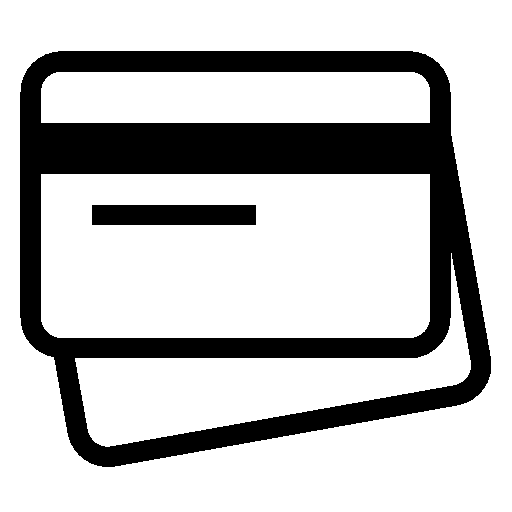Managing credit card bills can sometimes become a daunting task, especially when multiple cards are involved, or finances are stretched thin. Many people find themselves asking, “Is there a way to pay my credit card bill using another card?” The short answer is yes, but it’s important to understand the process, fees, and potential consequences before choosing this method.
Paying your credit card bills with another card typically involves using a credit card convenience check or a third-party payment service, but these options often come with their own set of costs and limitations. This article will provide a detailed step-by-step guide on how to pay your credit card bills using another card, highlighting both the pros and cons.
1. Understand the Concept of Paying Bills with a Credit Card
When you use one credit card to pay the bill of another, you are essentially using borrowed money to settle your debt. This process is generally done in two main ways: by using a convenience check issued by your credit card issuer or utilizing a third-party payment service. It’s important to recognize that both options come with potential fees, interest rates, and impacts on your credit score.
Before proceeding with either method, you should ensure that you are aware of any associated charges. For example, some credit card issuers charge a fee for using a convenience check or paying bills through third-party services, and this fee can be quite substantial (typically 2-3%).
2. Paying Credit Card Bills Using a Convenience Check
Some credit card companies issue convenience checks to their customers, which can be used to pay for things like credit card bills, loans, or even regular bills. These checks are essentially treated as a cash advance on your credit card and can be used to pay other bills, including credit card balances.
Step-by-Step Guide for Using a Convenience Check:
- Step 1: Review Your Credit Card Issuer’s Terms and Conditions Before using a convenience check, carefully read through your credit card’s terms and conditions. Look for information on fees, interest rates, and whether there are any restrictions on using the check for payments.
- Step 2: Obtain a Convenience Check from Your Issuer You will need to request a convenience check from your credit card company, as they may not automatically issue them. These checks are typically sent periodically to account holders, or you may have the option to request one online or through customer service.
- Step 3: Write the Convenience Check Once you have the check, write it out as you would any other check, including the credit card company’s name as the payee and the amount you wish to pay.
- Step 4: Deposit or Cash the Check You can deposit or cash the check at your bank, but be mindful that this will usually be treated as a cash advance on your credit card. Cash advances generally come with higher interest rates and no grace period, so interest starts accruing immediately.
- Step 5: Repay the Cash Advance When you pay off your credit card bill with the convenience check, ensure that you pay off the amount used, along with any additional fees or interest, as soon as possible. Cash advances tend to come with higher fees, and these can quickly increase if not managed properly.
Pros and Cons of Using Convenience Checks:
- Pros:
- Convenience checks are easy to use and allow you to pay other credit card bills.
- No need for a third-party service; you deal directly with the issuer.
- Cons:
- The biggest downside is that cash advance fees can be high, often ranging between 3-5% of the transaction amount.
- High interest rates on cash advances (usually higher than regular credit card purchases) begin accruing immediately.
- There is no grace period for cash advances, meaning interest starts to accumulate the moment the check is used.
3. Using Third-Party Services to Pay Credit Card Bills
If you don’t have a convenience check or prefer a different method, some third-party payment services allow you to pay one credit card bill with another. These services, such as Plastiq, let you use a credit card to pay for bills that typically don’t accept credit cards, including mortgage payments, taxes, and credit card bills.
Step-by-Step Guide for Using a Third-Party Payment Service:
- Step 1: Choose a Third-Party Payment Service Services like Plastiq or PayPal Credit let you pay bills with a credit card, though fees can vary. First, select the third-party service that suits your needs.
- Step 2: Set Up an Account Register for the third-party service by providing your credit card details and bank information. You will likely need to create an account with your chosen provider.
- Step 3: Add the Bill Details After setting up your account, enter the details of the credit card bill you wish to pay. Some services allow you to input the creditor’s name, address, and payment amount.
- Step 4: Choose the Payment Method Select the credit card you want to use for payment. The third-party service will allow you to charge the payment to that card, and in many cases, they will charge you a service fee (usually around 2.5-3%).
- Step 5: Pay the Bill Complete the payment. The third-party service will handle the transaction, and you will receive a confirmation once the payment is made.
Pros and Cons of Using Third-Party Services:
- Pros:
- Flexibility to pay almost any bill with a credit card.
- Can be used for bills that don’t traditionally accept credit cards.
- These services offer easy-to-use platforms with straightforward payment methods.
- Cons:
- High service fees typically between 2.5-3%.
- Interest charges on the credit card could accrue immediately, depending on your card’s terms.
- Not all credit card issuers accept third-party services for bill payment, so you’ll need to check in advance.
4. The Risks and Costs of Paying Credit Card Bills with Another Card
While paying credit card bills using another card can provide short-term relief, it is essential to be aware of the costs and risks involved. These include:
- Cash Advance Fees: Both convenience checks and third-party services often charge significant fees, usually between 2-5% of the transaction amount.
- High Interest Rates: Interest rates for cash advances are typically much higher than regular purchases and start accruing immediately.
- Potential Damage to Credit Score: Relying on credit card payments to pay off other credit card bills can lead to high balances on multiple cards, which could hurt your credit score if your credit utilization ratio becomes too high.
- Debt Cycle: Using one credit card to pay off another can create a cycle of debt. It’s important to pay off the balance in full and not let interest and fees pile up.
5. Alternatives to Paying Credit Card Bills with Another Card
If you’re looking for more sustainable ways to manage your credit card debt, consider these alternatives:
- Balance Transfers: Many credit card issuers offer balance transfer promotions that allow you to move high-interest debt from one card to another with little to no interest for a set period.
- Personal Loans: Personal loans often offer lower interest rates than credit cards, making them a viable option for consolidating debt.
- Debt Consolidation: Debt consolidation services can help you combine all your credit card debts into a single monthly payment at a lower interest rate.
Conclusion
Paying credit card bills with another card is possible but comes with significant risks, fees, and potential long-term consequences. It is important to carefully consider whether this is the right strategy for you and to weigh the costs involved. If you do choose to go this route, using convenience checks or third-party services can provide a short-term solution, but always ensure you are aware of the interest rates and fees. Exploring alternative debt management methods like balance transfers, personal loans, or debt consolidation might provide more sustainable options for managing credit card bills.




